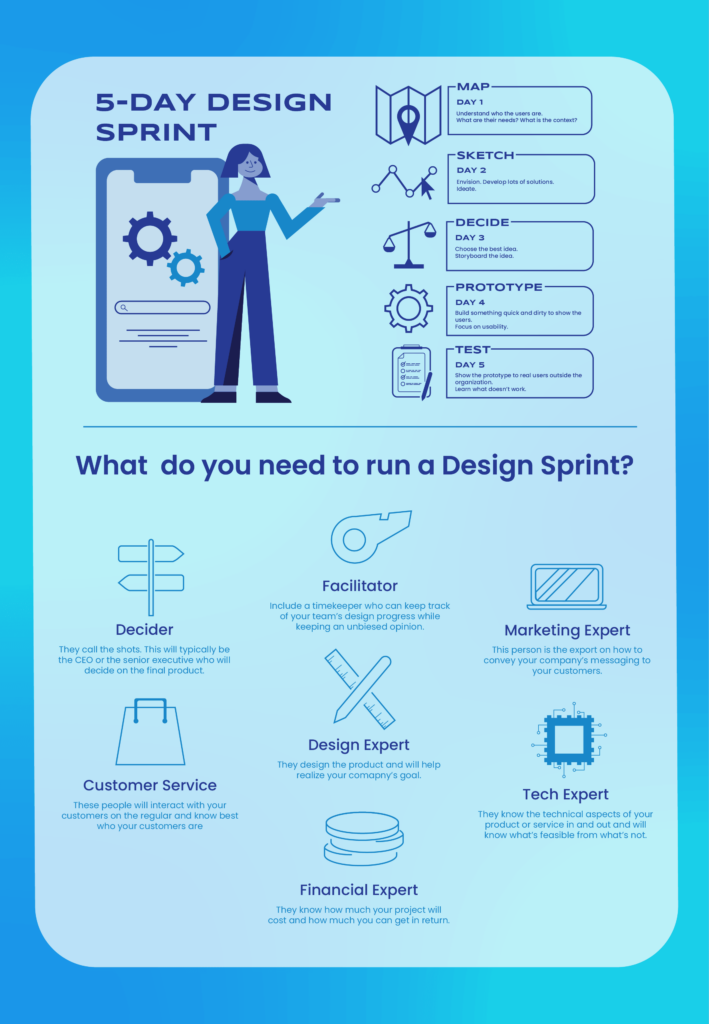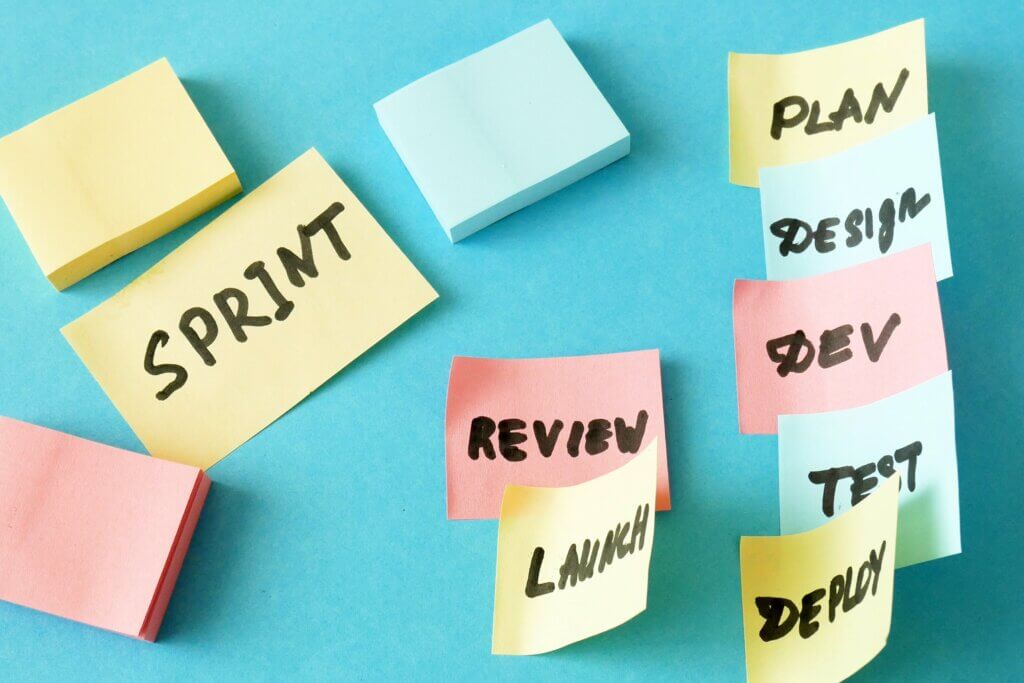After the publication of Jake Knapp’s The Sprint Book, design sprints soon became popular and created a buzz among entrepreneurs around the world. Design sprint workshops were being hosted here and there to help designers and business owners alike solve the challenges that they face. But what are design sprints and why do you need to run one?
Let’s take a look at these fundamentals.
What is a design sprint?
A design sprint is a unique process where you build and test a prototype in just five days. Design sprint was initially created by Google Ventures to help startup businesses solve critical business challenges through prototyping and testing ideas with final users and customers. It’s a quick way to learn without necessarily building and launching your project.
What are the steps in doing a design sprint?
A design sprint includes a five-day process that follows a step-by-step checklist. Each day has an activity assigned. These activities will allow your team to progress from understanding a core problem to creating actionable solutions by the end of the period.
Monday: Make a map out of the problem. At the start of the sprint, your team must define your long-term goal and key questions. This will guide your team to move in the same direction. Next, you need to map out your product/service: map out your customer’s pain points and their customer journey. Then, you must find a moment on the map that poses the greatest risk or opportunity.
Tuesday: Sketch the solutions. This day is dedicated to solving the problem. Instead of presenting your solutions in a typical group brainstorm, your team must sketch their opinions and ideas following a four-step sketch method that forces you to create solutions effectively.
Wednesday: Make a decision. On this day, your team must decide on the best solution to prototype. Your team will decide on the best solution by using the “Sticky Five-Step Method” to identify the best solutions. Then, you’ll take the key scenes from your sketches to create a storyboard that will guide your prototype.
Thursday: Prototype. Now, it’s time for your team to create a realistic prototype of the solutions in your storyboard. This prototype must be realistic enough to simulate a finished product with your customers or end-users.
Friday: Test the prototype. Your team has reached the end of the sprint! Finally, you can now show your final prototype to your customers, done in separate 1:1 interviews.

Conclusion
Design sprints have become popular for a good reason and that’s because they help you solve design problems quickly. By letting you build a quick prototype and test it without launching the project per se, you can enjoy user validation right from the get-go and you can pinpoint potential problems right away.
What’s important is that through a design sprint, your team can learn how to collaborate better and you get to adopt the practice of visualizing solutions, rather than writing them. These key takeaways once implemented well, can help your team grow and help your business flourish even outside the context of a design sprint.

